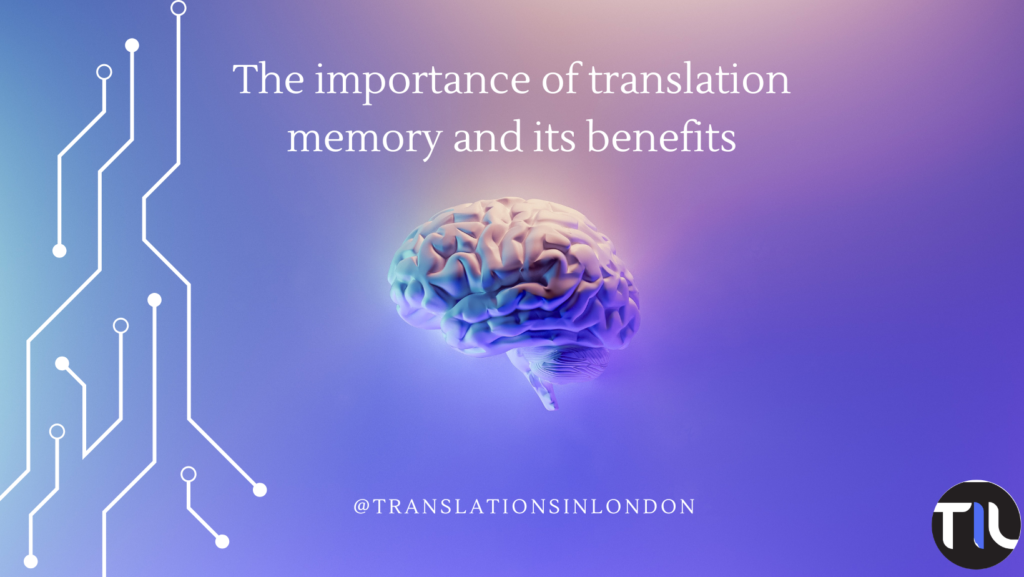
A translation memory is a fairly recent technology created to help translators. It is also a “database” that keeps the earlier time translated length of the text. Translation memory (TM) is an encoded computer instruction which a translator uses to keep his work in a database, for it to be reused. The main benefits of this technology are; saved time and cost, more efficiency and consistency. The text will be broken into segments by a program and matches each sentence in the source document with a target length which keeps apparent time into the database.
A clear distinction should still be made between the translation memories and the machine translation. In the machine translation case, a database is used to complete the conversion, without manual input, and the results are not fit to be used for professional purposes.
Nevertheless, deciding how two similar lengths of text are the algorithm of matching texts or similarity of texts. Most translation memory software keep their similarity algorithms and always being cautious about it.
Importance of Translations Memory (TM)
To save time, money, and quality, CAT tools, including Translation Memory (TM), have become very familiar with translators, translation agencies, and even clients. There are advantages and disadvantages of TM for professional translators and translation agencies; it has no problems for customers.
Translation memory is part of the relevant tools that make quality, speed, and cost of delivering professional translation work different. A translation service provider that doesn’t discuss with you about translation memory or doesn’t make use of it is not providing a top-notch service. If you have a permanent need for fast, accurate, and easy translation, it’s not what you should do leave aside.
Benefits of Translations Memory
To carry out a formerly effective and consistent translation quality, any client must seek to be sure of his/her ultimate goal while making use of translation memory. TM usage provides more benefits that extend to language service providers and translation buyers. The benefits are as follows:
Cost: Translation is commonly charged by the word. TM will have those lengths kept; it means there are little words actually to translate. Of course, this also means that copywriters should not replace acceptable sentences because they can, or the full benefit is lost. Anything that doesn’t correspond to TM will be translated.
Consistency: The high value of TM lies in the capacity of translation quality that is likely to increase regarding consistency, both in the similar document plus throughout other documents. TM keeps pairs of terms or strings of texts and recreates them whenever the same Source Language (SL) name or string comes along in any other place in the document that is being translated. Consequently, it assists to maintain consistency by always making use of the same equivalent for a similar term or string. That is to say, the translation becomes more efficient and consistent. Furthermore, the similar TM can forever be used with future translations, as a result of achieving consistency concerning terminology and style all through the translation projects.
Efficiency: TM improves productivity which leads to an increase in income. This accounts for the fact that most clients now are not only having knowledge of it but also require translation memory software to translate their work. In other words, with the use of translation memory makes translation agencies much competitive by being differentiated from others that don’t use TM. Hence, they have more chance to receive more work. Finally, TM is portable, and it can be saved on a CD.
Speed: 75% of a translator’s time is accounted for by terminology search. So TM keeps the translator’s time by restraining him the need to look up the terms and words again if they are repeated in the message, particularly in the situation of large projects, or in another translation from the same client or in the same area of specialization.
Repeated terms and strings will be translated by the translator only once, and translation memory will convert them at whatever time they
In conclusion, the advent of translation memory technology has revolutionized the translation industry, bringing numerous benefits to translators, translation agencies, and clients alike. The use of translation memory allows for significant time and cost savings, increased efficiency, and improved consistency in translations.
By utilizing translation memory, translators can leverage their previous work and build a database of translated segments, ensuring that repetitive content is translated accurately and consistently. This not only speeds up the translation process but also enhances the quality and consistency of the final output.
For translation agencies, the adoption of translation memory technology sets them apart from competitors and allows them to offer faster, more accurate, and more cost-effective translation services. It enables them to handle large projects efficiently and meet tight deadlines without compromising quality.
Clients also benefit from translation memory technology as it ensures consistency across their documents and projects. Terminology and style remain consistent, enhancing the overall quality of translations and reinforcing their brand image.